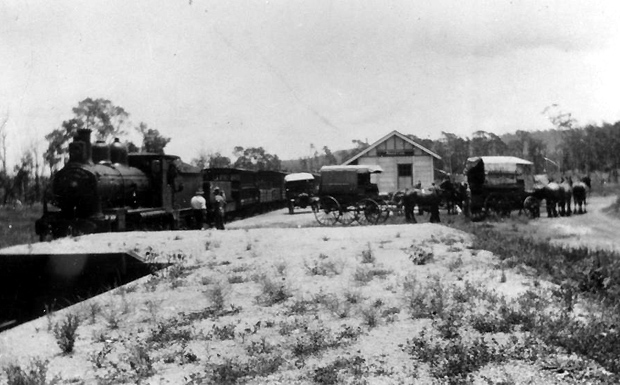
January 19, 2020
A 13.4km rail trail between Proston and Hivesville could cost an estimated $2.2 million to build but would inject about $786,000 a year into the Proston-Hivesville economy, according to a new study.
Trail building costs could be paid by Federal and State Government grants, and annual maintenance of the trail was likely to cost ratepayers as little as $6500 to $39,000 per year.
The figures were outlined in the Murgon-Proston Rail Trail Feasibility Study presented at the South Burnett Regional Council’s January meeting.
After a short discussion on the topic – during which Mayor Keith Campbell noted the project would not be included in Council’s capital works program – councillors followed a recommendation simply to receive the report.
The $48,000 study was carried out by Mike Halliburton Associates and was fully funded by the Department of Transport and Main Roads.
It was carried out at the request of Proston residents after a public meeting held in Proston’s Community Hall last January.
At that meeting, Councillors were urged to apply for a grant to determine if it was feasible to extend the South Burnett Rail Trail from Murgon to Proston.
Councillors agreed to do so on condition that conducting the study did not commit Council to taking any specific action on it.
Mr Halliburton, who carried out the original feasibility assessment for the South Burnett Rail Trail, was appointed by TMR to carry out the work.
His study involved on-site inspections of the route and public consultation meetings in Murgon, Mondure, Hivesville and Proston to test local sentiment.
He also analysed the economic impacts and likely construction and maintenance costs of the proposed trail, based on studies of 100 other Australian rail trails.
The study found that while sections of the former railway line near Murgon and Proston would be attractive to rail trail users, a long strip between Byee and Mondure which passed through flat and featureless farming land would not be.
It noted noted some farms along the route had been extended across the former rail line; and aerial spraying was a “problematic concern”.
Sections of the route would also require the construction of bridges and would be prone to flooding in extreme weather, potentially doubling construction and future maintenance costs.
However, Mr Halliburton suggested the Hivesville-Proston section was ideal for a short trail and would provide the best return on investment.
Construction of this section would attract overnight visitors to both towns and, if horses were allowed, could also attract equestrian groups.
A Proston-Hivesville Trail could also increase the appeal of both the South Burnett and Brisbane Valley rail trails to visitors by offering an extra option.
Speaking at the Council meeting, Mayor Keith Campbell underlined that Council’s acceptance of the study did not commit it to pursuing the matter.
“This is not on Council’s capital works program at the moment – it’s just a study,” he said.
He said Council had applied for the funding on behalf of the Coverty Creek Community Development Association, which he believed no longer existed.
Deputy Mayor Kathy Duff said she disagreed Council should take no action, saying businesses in Proston were very keen to get something like this.
“This is a very balanced, good report,” Cr Duff said.
“Hivesville-Proston is the only viable section at the moment. Mondure farmers were upset, but Proston-Hivesville is not affected by this.”
She said the study showed the project was affordable and the benefits it would inject into Proston and Hivesville were considerable.
- Download: Murgon Proston Rail Trail Feasibility Study (11.25Mb PDF)
Related Articles:
























Is this the same Mr. Halliburton who told us that the Kingaroy to Murgon Rail Trail would bring 30,000 more visitors to the stay in the South Burnett? If so, what are the region’s tourist operators complaining about?
Fact check: Mr Halliburton’s economic assessment of the Kilkivan-Kingaroy Rail Trail (undertaken prior to construction) estimated the rail trail would attract 6500 visitors per annum, who would inject an additional $1.2 million into the economies of towns and villages along its length. These figures can be found in Table 4 on Page 8 of the attached document:
KKRT Economic Assessment
Mike Halliburton told me personally in front of others, that the figure was 30,000 when he held the public consultation session in the Kingaroy Mall. Guess he was drumming up support for the Council project.
I wasn’t at that meeting, Terry, but perhaps Mr Halliburton was talking about future traffic potential and this was misunderstood. After all, the Brisbane Valley Rail Trail has seen a spectacular growth in usage over the past 12 years, and so have many other Australian rail trails.
In his evaluation of whether the project was financially viable or not, though, Mr Halliburton used much more conservative estimates (ie the document I linked to). Happily, these projections appear to have been achieved within the first year of the trail’s opening.